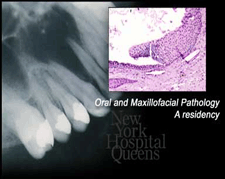المقالات
Dentigerous Cyst

Dentigerous cysts are smooth, firm, soft tissue growths that can develop on any tooth that has not grown in (erupted) completely. They form from the follicular sac, a membrane that surrounds the crown portion of every tooth before it erupts fully in the mouth. They are slow growing and can be painful if they become infected. Dentigerous cysts may be associated with skeletal abnormalities, basal cell carcinomas, and other dental tumors. Dentigerous cysts are most common in the area of the lower third molars (wisdom teeth) or the upper cuspids. They can occur in anyone over six years of age, but are most prevalent among those in their 20's and 30's. Normally, dentigerous cysts encircle the crown portion of an unerupted tooth, but they can also grow laterally (sideways) from the crown. If the cyst is particularly large, it can envelop the entire tooth. Despite their relatively slow growth, this type of cyst has the potential to become so large that it can cause part of your mouth or face to swell, or it can pressure adjacent teeth so they tilt. If you have a dentigerous cyst, we will detect it when we take x-rays as part of your regular examination.
We usually surgically remove dentigerous cysts, using a procedure called curettage.
If the cyst is very large, or if it's close to a vital structure, we can utilize a procedure called marsupialization, in which a portion of the cyst wall and outer lining of the tissue is removed. This leaves a pouch-like structure that can be dressed periodically, allowing healing to occur more gradually. This prevents complications that might occur if the entire cyst is removed in one surgical procedure.
